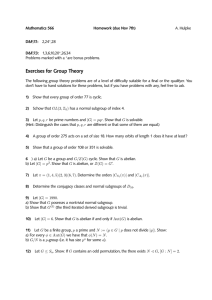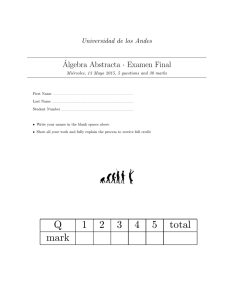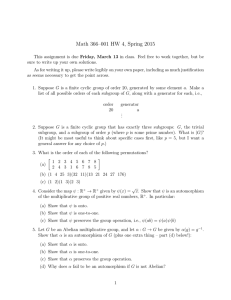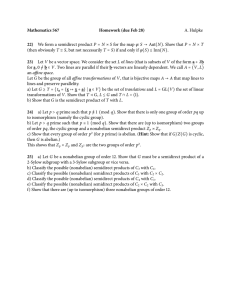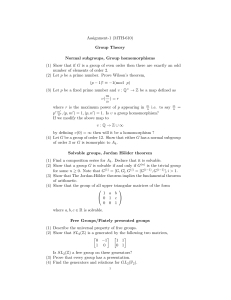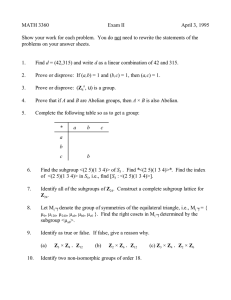Fall 2010 Math 540A
advertisement
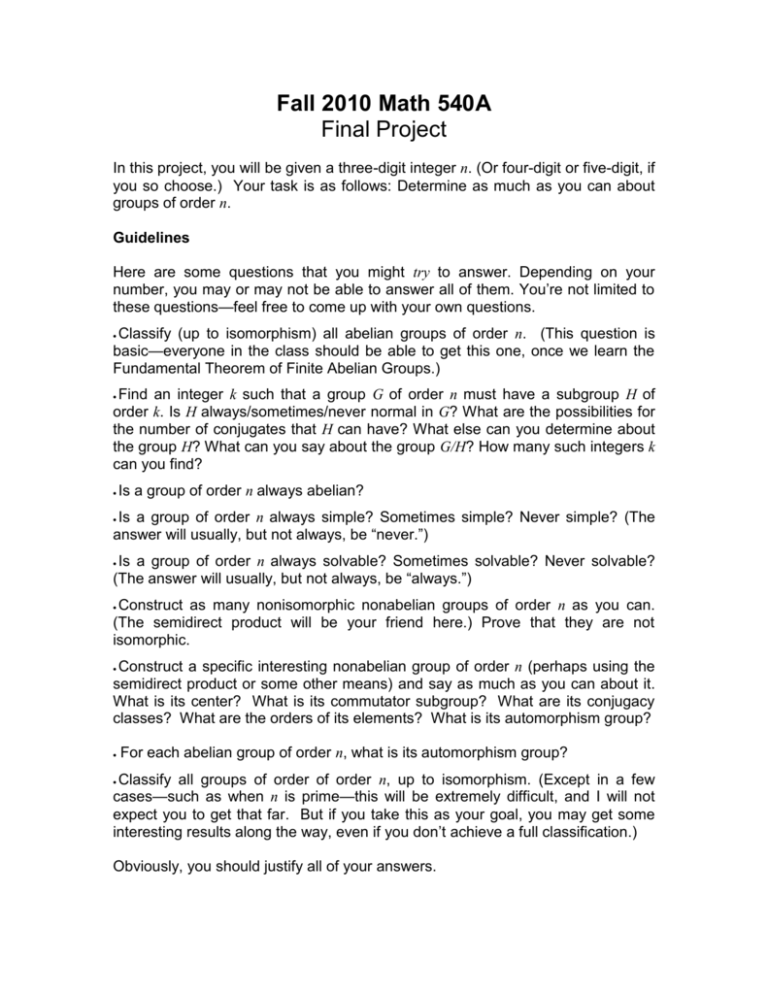
Fall 2010 Math 540A Final Project In this project, you will be given a three-digit integer n. (Or four-digit or five-digit, if you so choose.) Your task is as follows: Determine as much as you can about groups of order n. Guidelines Here are some questions that you might try to answer. Depending on your number, you may or may not be able to answer all of them. You’re not limited to these questions—feel free to come up with your own questions. Classify (up to isomorphism) all abelian groups of order n. (This question is basic—everyone in the class should be able to get this one, once we learn the Fundamental Theorem of Finite Abelian Groups.) Find an integer k such that a group G of order n must have a subgroup H of order k. Is H always/sometimes/never normal in G? What are the possibilities for the number of conjugates that H can have? What else can you determine about the group H? What can you say about the group G/H? How many such integers k can you find? Is a group of order n always abelian? Is a group of order n always simple? Sometimes simple? Never simple? (The answer will usually, but not always, be “never.”) Is a group of order n always solvable? Sometimes solvable? Never solvable? (The answer will usually, but not always, be “always.”) Construct as many nonisomorphic nonabelian groups of order n as you can. (The semidirect product will be your friend here.) Prove that they are not isomorphic. Construct a specific interesting nonabelian group of order n (perhaps using the semidirect product or some other means) and say as much as you can about it. What is its center? What is its commutator subgroup? What are its conjugacy classes? What are the orders of its elements? What is its automorphism group? For each abelian group of order n, what is its automorphism group? Classify all groups of order of order n, up to isomorphism. (Except in a few cases—such as when n is prime—this will be extremely difficult, and I will not expect you to get that far. But if you take this as your goal, you may get some interesting results along the way, even if you don’t achieve a full classification.) Obviously, you should justify all of your answers. I’m expecting that the final result will be no more than, say, 3–4 pages in length. Instead of writing out every little last detail of every proof—that would be more than I could possibly read—instead, give your main results and a brief summary of how you got that result. For example, if your number is 94 and you’re discussing simplicity, you might write: Theorem 3. If G is a group of order 94, then G is not simple. Proof. It follows from Sylow’s Theorem that G has a subgroup H of order 47. Then |G:H|=2, so H is normal. Q.E.D. If you are unhappy with your number for any reason, you may request a new number at any time. If you can easily classify all groups of your order, then you must request a new number. Feel free to use any source in arriving at your answers. If you use any source other than me or the textbook, you must cite your source. Please feel free to work with others. But your write-up should be your own. The paper does not have to be typed—handwritten is OK. (Although you may type it if you want to.) Whether or not you type it, it must be legible. Due date: The paper will be due during the final exam period.



